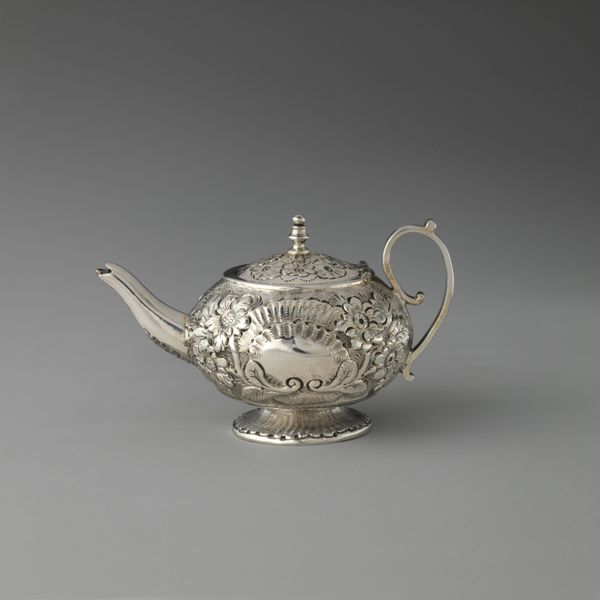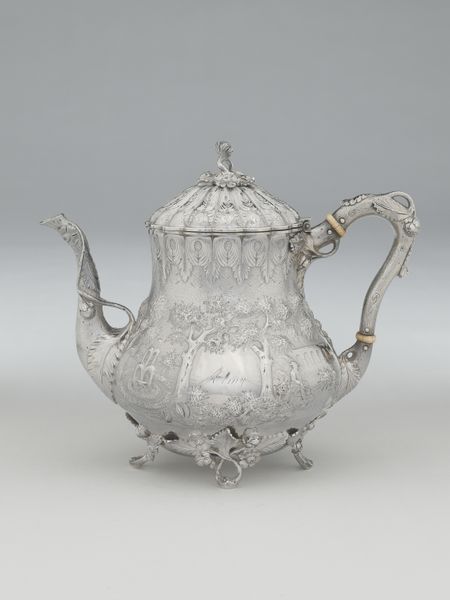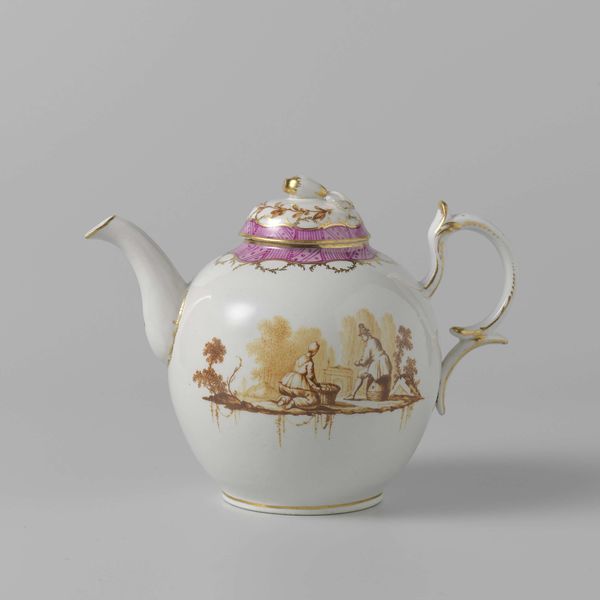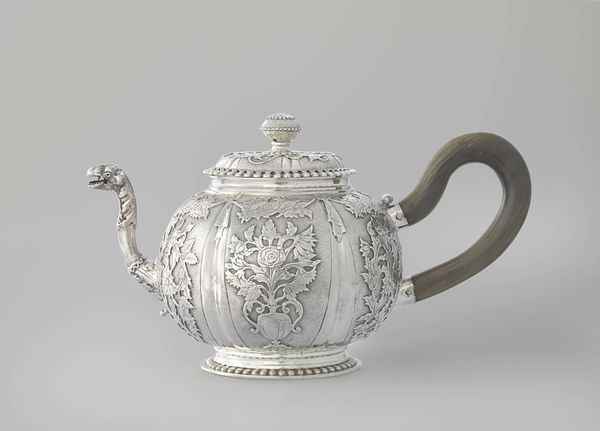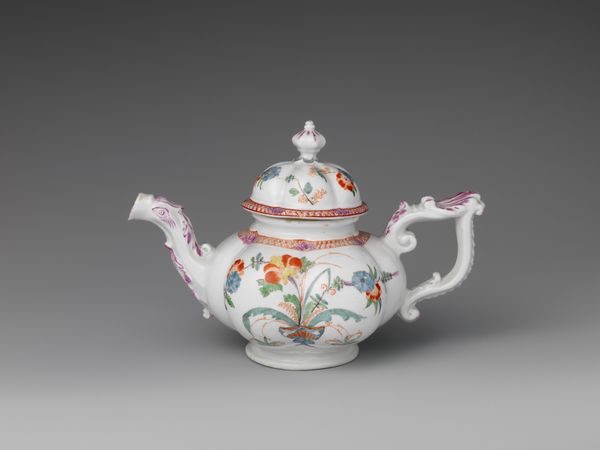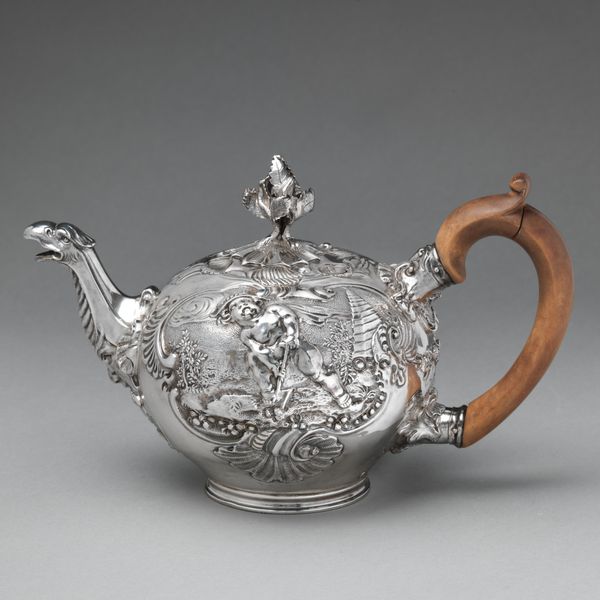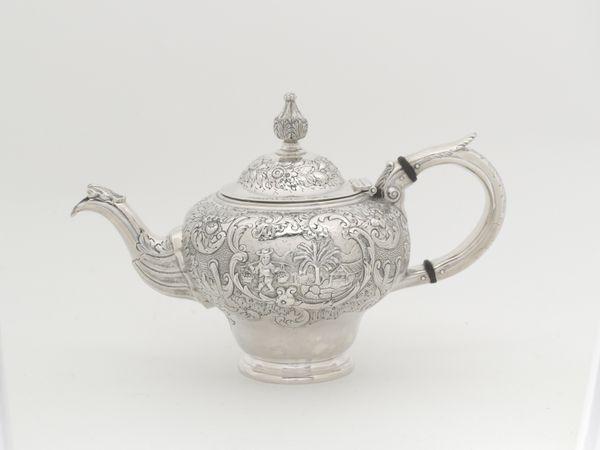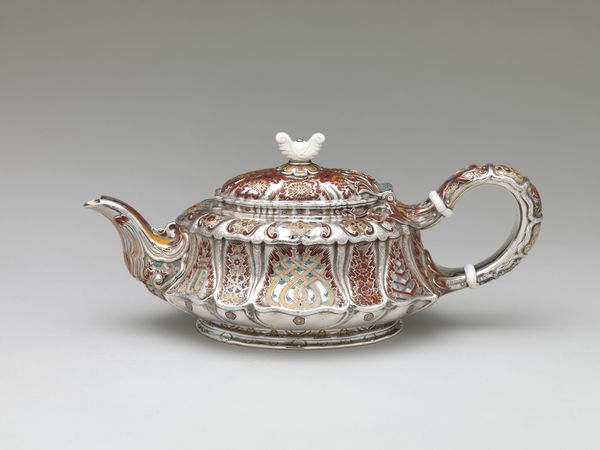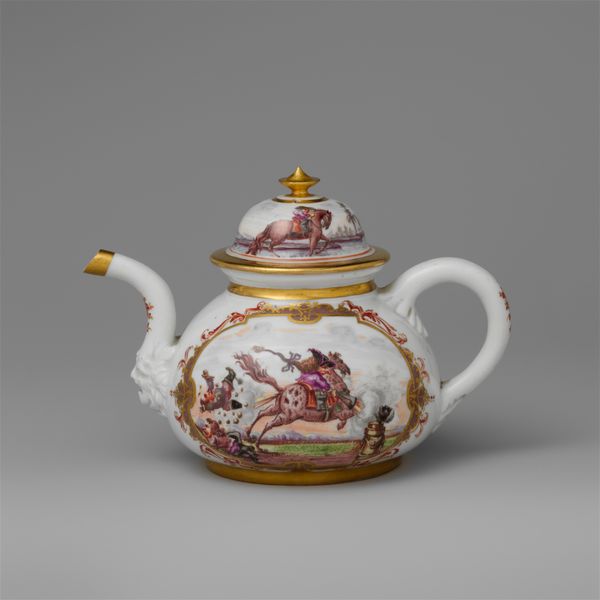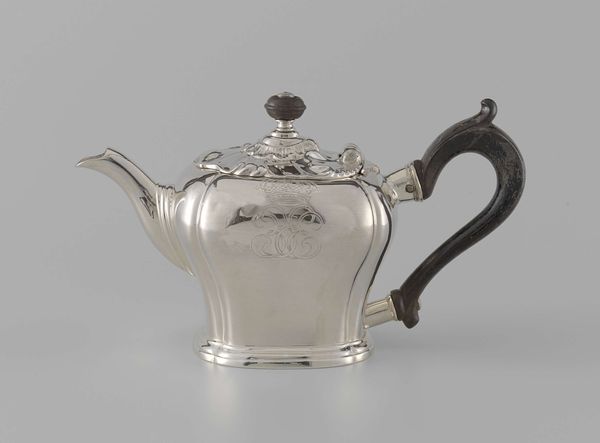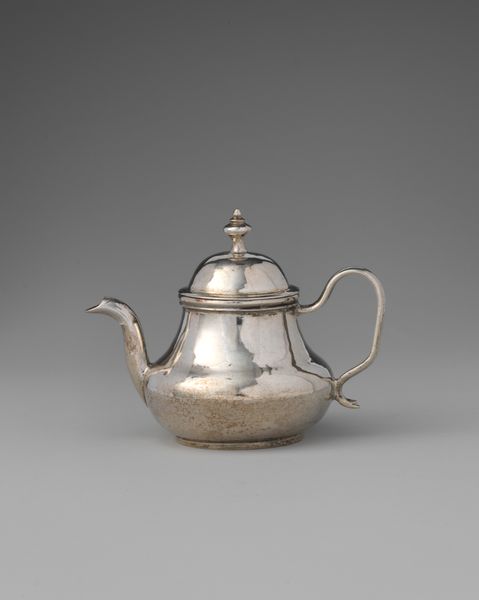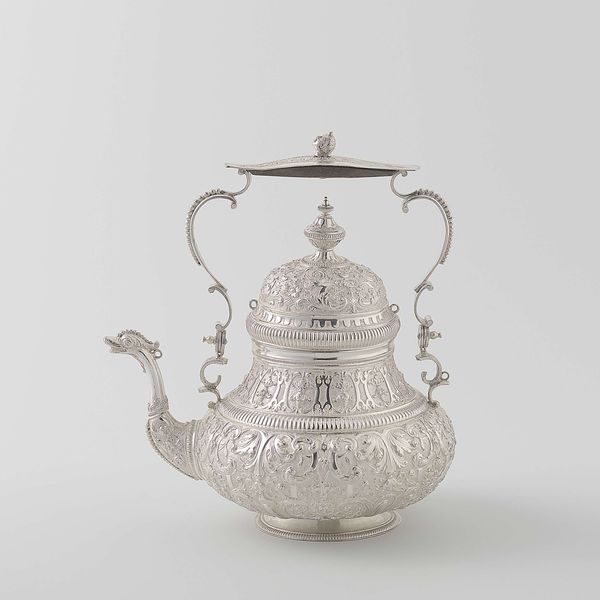
silver, ceramic, sculpture
#
silver
#
baroque
#
ceramic
#
sculpture
#
ceramic
#
decorative-art
Dimensions: height 15 cm, width 18 cm, depth 14 cm
Copyright: Rijks Museum: Open Domain
Curator: Welcome. We're standing before a remarkable silver teapot, crafted around 1758 and held in the Rijksmuseum collection. Its surface practically vibrates with ornamentation. Editor: It’s extraordinarily ornate. The gleam of the silver immediately suggests luxury and careful craft. I can almost feel the weight of it, a symbol of refined taste and economic power. Curator: Indeed. The object's very form speaks volumes. Note the baroque style, so prominent in decorative arts of the era. What does that aesthetic layering signify to you? Editor: I see an intense emphasis on control and craftsmanship. Think about the process: The silversmith would have meticulously shaped the form, engraving detailed flourishes across every surface. The labor and skill invested scream social hierarchy, displaying disposable income as a symbol of status. Curator: Precisely. It goes further. Observe the spout shaped like a dragon’s head, a figure atop the lid holding what looks like a tiny horn…These details aren’t just decorative; they're potent symbols of status, aspiration, and trade. The exotic dragon reflects European fascination with the East, brought to the breakfast table itself. Editor: But it also shows the material realities. Where was the silver mined? How were the silversmiths trained? This teapot's beauty obscures a globalized story of resource extraction, skill, and access controlled by only a few. It probably sat atop porcelain from China. Curator: An excellent point. The rituals around tea – where the leaves were grown, how the hot water was conveyed into the pot and then poured into individual vessels--formed elaborate stages. They’re performances reinforcing status. Editor: Right, but at what cost? Understanding where materials originate connects us directly to larger systems of extraction, value, and exploitation. We have to understand its relation to colonial economies, perhaps even slavery. The pleasure it represents would have been at the price of great inequity. Curator: Thank you, your insight casts a light on this piece’s complex identity. Editor: Well, by looking at materials we begin to see its context beyond courtly display.
Comments
rijksmuseum about 2 years ago
⋮
The stylistic idiom of this richly decorated pot is typical for silver from the province of Friesland. Inhabitants of Amsterdam or The Hague would have thought such a piece very old-fashioned around 1760. The small town of Stavoren did not have its own assay office; the pot has been marked in Sneek.
Join the conversation
Join millions of artists and users on Artera today and experience the ultimate creative platform.
